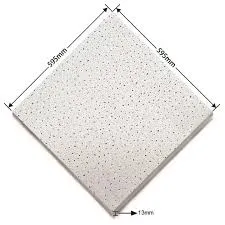10 月 . 17, 2024 19:34 Back to list
Exploring T-Bar Ceiling Grid Design and Installation Techniques for Modern Interiors
Understanding T-Bar Ceiling Grids An Essential Component in Modern Architecture
In the realms of interior design and architecture, the T-bar ceiling grid has emerged as a quintessential feature that not only enhances aesthetics but also serves a multitude of practical purposes. Often referred to as a suspended ceiling or drop ceiling, the T-bar grid system consists of a framework that supports panels or tiles, creating a seamless ceiling surface.
The Anatomy of T-Bar Ceiling Grids
The T-bar ceiling grid is constructed from lightweight materials, primarily aluminum or galvanized steel, which ensures durability and resistance to corrosion. The grid system typically features a series of 'T'-shaped cross sections that interlock to form a rectangular grid layout on the ceiling. This configuration allows for the easy insertion of ceiling tiles, which can be composed of various materials, including mineral fiber, fiberglass, or acoustic tile.
The major components of a T-bar ceiling grid include the main runners, which run the length of the ceiling, and the cross tees, which connect perpendicularly to the runners. This design not only provides structural integrity but also allows for a range of panel sizes, accommodating different architectural needs and preferences.
Benefits of T-Bar Ceiling Grids
1. Aesthetic Versatility One of the primary advantages of T-bar ceiling grids is their aesthetic flexibility. These ceilings can be easily customized with various tile designs, colors, and textures, enabling architects and designers to complement different interior styles—from contemporary to traditional.
2. Acoustic Control T-bar ceiling grids can significantly affect a space's acoustics. By choosing acoustic tiles, designers can reduce reverberation and noise levels within a room, creating a more conducive environment for work and relaxation. This property is particularly important in environments like offices, schools, and healthcare facilities where sound management is critical.
tee bar ceiling grid

3. Accessibility The suspended nature of T-bar ceilings allows for easy access to mechanical systems, electrical wiring, and plumbing. Maintenance and repairs can be performed without the need for extensive construction work, making it a convenient solution for commercial spaces where downtime must be minimized.
4. Energy Efficiency With proper insulation, T-bar ceiling grids can improve energy efficiency in buildings. They can accommodate insulation above the ceiling tiles, reducing dependence on heating and cooling systems and lowering energy costs over time.
5. Fire Safety and Compliance Many ceiling tiles within T-bar systems are designed to be fire-resistant, helping to improve a building's overall safety. Compliance with safety regulations is crucial for commercial buildings, and the right ceiling grid can aid in achieving necessary certifications.
Installation and Maintenance
While the installation of T-bar ceiling grids can be a straightforward process often performed by professionals, it requires meticulous planning to ensure even alignment and proper height. From laying out the design to securing the grid to the ceiling, every step is critical for achieving a polished look.
Maintenance is relatively simple, involving occasional cleaning and the replacement of any damaged tiles. The modular nature of this ceiling allows for easy tile replacement, ensuring that any worn or stained panels can be quickly swapped out without disturbing the entire system.
Conclusion
T-bar ceiling grids represent a blend of functionality and modern design trends in today's architectural landscape. Their benefits extend beyond aesthetics, offering solutions for acoustic control, energy efficiency, and maintenance accessibility. As architectural practices continue to evolve, the T-bar ceiling grid remains an integral component in creating spaces that are not only beautiful but also practical and safe. Investing in a well-designed T-bar ceiling grid can significantly enhance the overall experience of a building, making it a favored choice among architects and designers alike.
-
Revolutionizing Interior Design with Ceilings t grid Suspended SystemNewsOct.29,2024
-
Revolutionizing Ceiling Design with ceiling access panel with Gypsum Tile WaterproofNewsOct.29,2024
-
Revolutionizing Interior Design with PVC Gypsum Ceiling: A Comprehensive GuideNewsOct.29,2024
-
Elevating Interior Design with High quality Mineral Fiber Ceiling TilesNewsOct.29,2024
-
Revolutionizing Interior Design with PVC Gypsum Ceiling: A Comprehensive GuideNewsOct.29,2024
-
Elevating Interior Design with High-Quality Mineral Fiber Ceiling Tiles: A Comprehensive GuideNewsOct.29,2024







